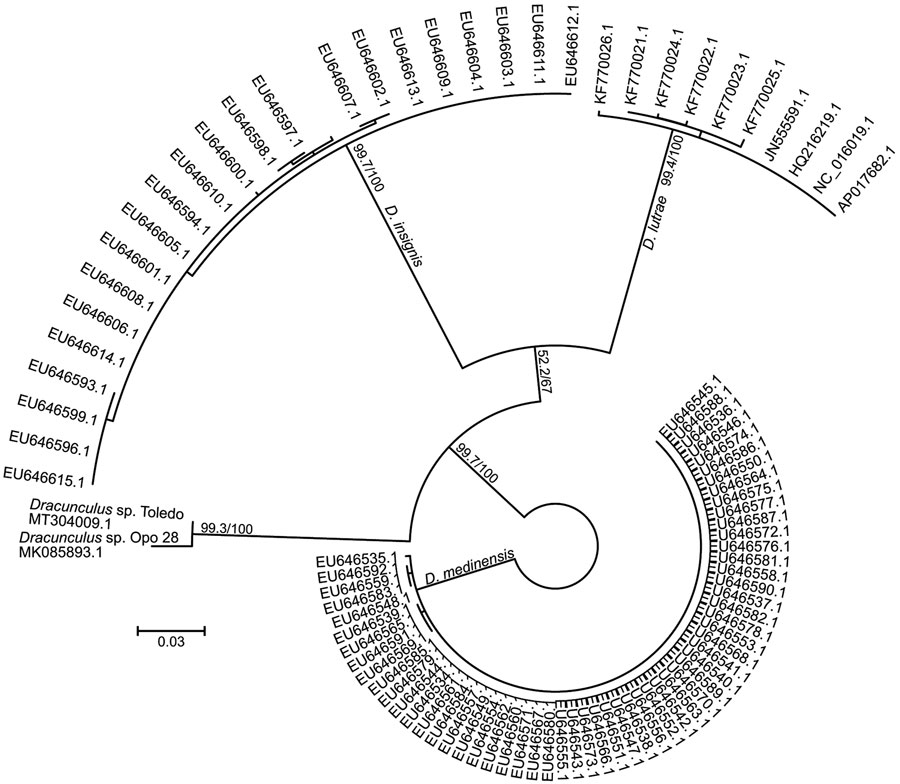Volume 26, Number 8—August 2020
Dispatch
Canine Dracunculus Nematode Infection, Toledo, Spain
Figure 2

Figure 2. Unrooted maximum-likelihood phylogenetic tree based on Dracunculus spp. mitochondrial marker cytochrome oxidase C subunit I sequences from a dog in Toledo, Spain, 2018, and reference sequences. Node support values represent results of ultrafast bootstrapping before and the Shimodaira-Hasegawa approximate likelihood ratio test after the slash. Labels at end nodes represent GenBank accession numbers. Scale bar indicates substitutions per site.
Page created: May 27, 2020
Page updated: July 18, 2020
Page reviewed: July 18, 2020
The conclusions, findings, and opinions expressed by authors contributing to this journal do not necessarily reflect the official position of the U.S. Department of Health and Human Services, the Public Health Service, the Centers for Disease Control and Prevention, or the authors' affiliated institutions. Use of trade names is for identification only and does not imply endorsement by any of the groups named above.